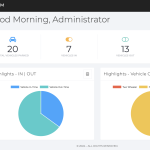When you're updating your website or fixing bugs, activating maintenance mode is essential to prevent users from seeing broken pages. In this guide, we’ll cover four reliable methods—ranging from plugins to server-level settings—so you can choose the best option for your tech stack.
1. Use a CMS Plugin (e.g., WordPress)
If your site runs on WordPress, the easiest way is to use a plugin like SeedProd or WP Maintenance Mode.
- Install the plugin from the WordPress dashboard.
- Customize the maintenance page (logo, message, countdown timer, etc.).
- Enable maintenance mode with a single click.
Best for: Non-tech users or those who want visual editing.
2. Use .htaccess Rules (Apache Servers)
This method works directly on Apache web servers and is ideal if you have root or FTP access.
RewriteEngine On
RewriteCond %{REMOTE_ADDR} !^123\.456\.789\.000
RewriteRule ^(.*)$ /maintenance.html [R=302,L]
Explanation: This redirects all users (except your IP) to a static maintenance page.
Best for: Developers using Apache hosting environments.
3. Use a maintenance.php Fallback in PHP
For custom PHP websites, use a flag-based toggle system to show a maintenance page.
if (file_exists('maintenance.flag')) {
include('maintenance.php');
exit();
}
Simply create a maintenance.flag file to activate the mode, and delete it to bring the site back live.
Best for: Custom-built PHP applications.
4. Use Server Configs (Nginx or Laravel)
If you use Laravel or a similar framework, there's a built-in way to trigger maintenance mode.
php artisan down --message="We'll be back soon!" --retry=60
Nginx users can redirect to a 503.html file using server block rules during deployments.
Best for: Framework-based sites and DevOps workflows.
Bonus Tips
- Set a
Retry-After HTTP header to help with SEO. - Use Google Analytics to monitor downtime traffic.
- Notify users via email or social media before maintenance starts.
Conclusion
Each method fits different site setups. Whether you're on WordPress, using Apache/Nginx, or building with PHP, there’s a secure way to activate maintenance mode. Protect your users and your SEO by planning it properly.
Need help implementing one of these methods? Leave a comment or contact us!
















